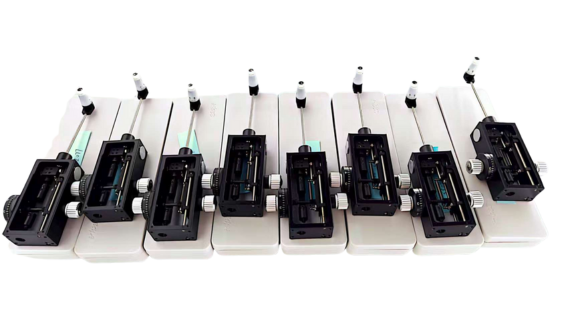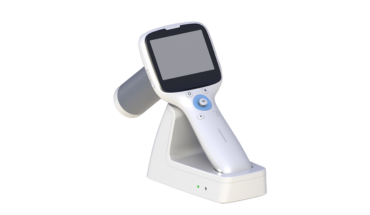GT600 Applanation Tonometer
The Goldmann Applanation Tonometer is intended to measure intraocular pressure for use as an aid in glaucoma screening and diagnosis.
- Three Types of Models for Choice
- Exquisite Workmanship
- Z Type Is Compatible for Both Haag-Strait Type and Zeiss Type Slit Lamp
About The Applanation Tonometer
Our applanation tonometers are designed for use with a slit lamp. We offer three models for various slit lamps. If you’re wondering which applanation tonometer is right for your slit lamp, contact us and we’ll recommend one!
Specifications
| Measuring Range | 0~80mmHg |
| One Scale Unit | 1.96mN |
| Measurement Accuracy | ±0.49mN or 1.5% which ever is greater |
| Repeatability | ≤0.5mN |
| Reverse Span | 0.49mN |
| Diameter of Applanation Circle | 3.06mm ±0.02mm |
| Applanation Area | 7mm² |
| Moving Range of Measuring Prism | 3mm |
| Net Weight | 0.5kg |
Three Type of Applanation Tonometer

R Type
T Type


Z Type
Prisms of Applanation Tonometer
The prism is the key to the applanation tonometer. It carries the mission of contacting each patient’s eye, so its material is crucial. We use high-quality materials and undergo rigorous testing to provide you with an exceptional experience. We also offer two packaging options for our prisms: a box of three and a box of six. Contact us to purchase our prisms, and we’ll provide you with quality products and professional service!
Applanation Tonometers Production Line
Each applanation tonometer undergoes multiple processes, repeated polishing and precise measurement to create perfect quality.

Applanation Tonometer Application



Related Products (4)
The design principle of applanation tonometer measurement is to press the cornea to a certain area of pressure, more convenient to measure the intraocular pressure.
Normal IOP refers to the following intraocular pressure: (1) Average IOP: The range of normal IOP in China is 10-21 mm Hg, and the average IOP is 15 mm Hg(2) The upper limit of normal IOP: that is, the highest value of normal IOP, currently considered to be 24 mm Hg(3) healthy IOP: Intraocular pressure is more than 24 mm Hg without visual impairment.
Abnormal results or Pathological IOP: IOP greater than 24 mm Hg or less than 10 mm Hg. For individuals, pathological IOP must be determined by comprehensive analysis in combination with fundus, visual field and anterior chamber Angle examination in addition to IOP measurement.
Inappropriate people: where there is keratopathy (such as edema, inflammation, scar, etc.), corneal thickening or irregular, will affect the measurement results, so it can not be measured with this type of tonometer. Pre-examination taboo: do not drink alcohol, drink coffee, hold your breath. Examination requirements: The patient’s head is fixed.
Primary glaucoma, primary adolescent glaucoma, primary infantile glaucoma, glaucoma due to vitreous and retinal detachment surgery, glaucoma due to penetrating keratoplasty, glaucoma secondary to aphakia and intraocular lens, glaucoma due to increased venous pressure in the upper sclera, neovascular glaucoma, pigmentary glaucoma, drug-related glaucoma.










